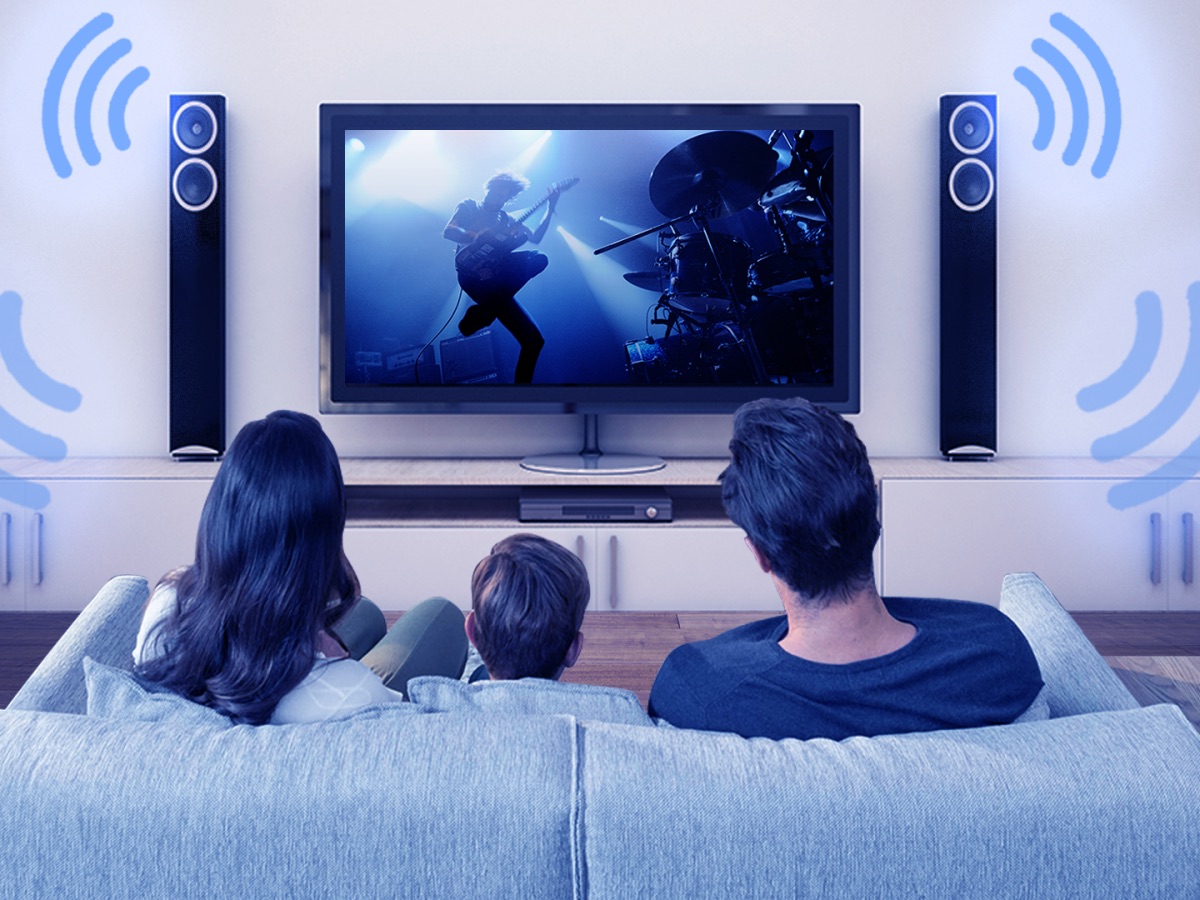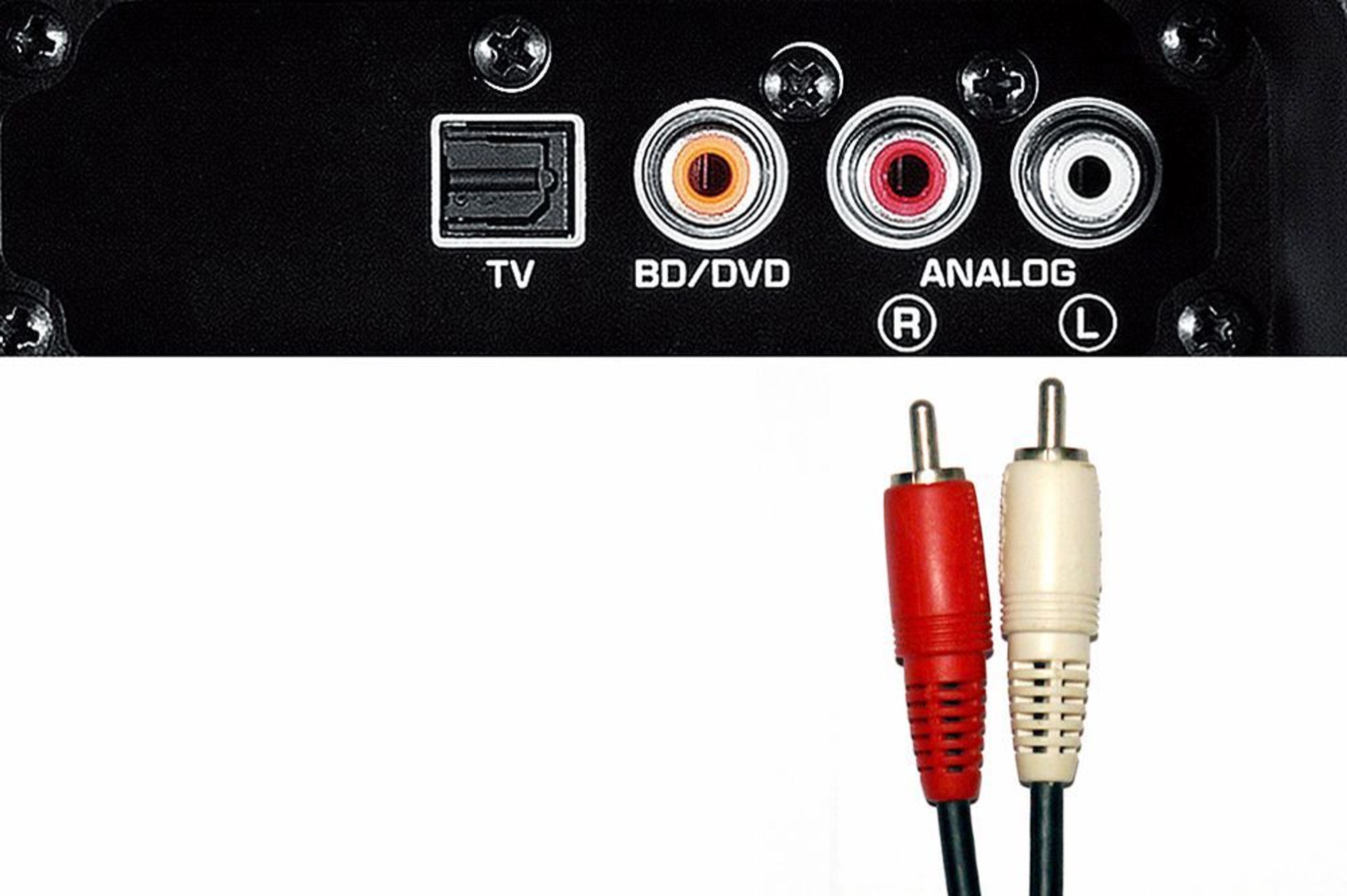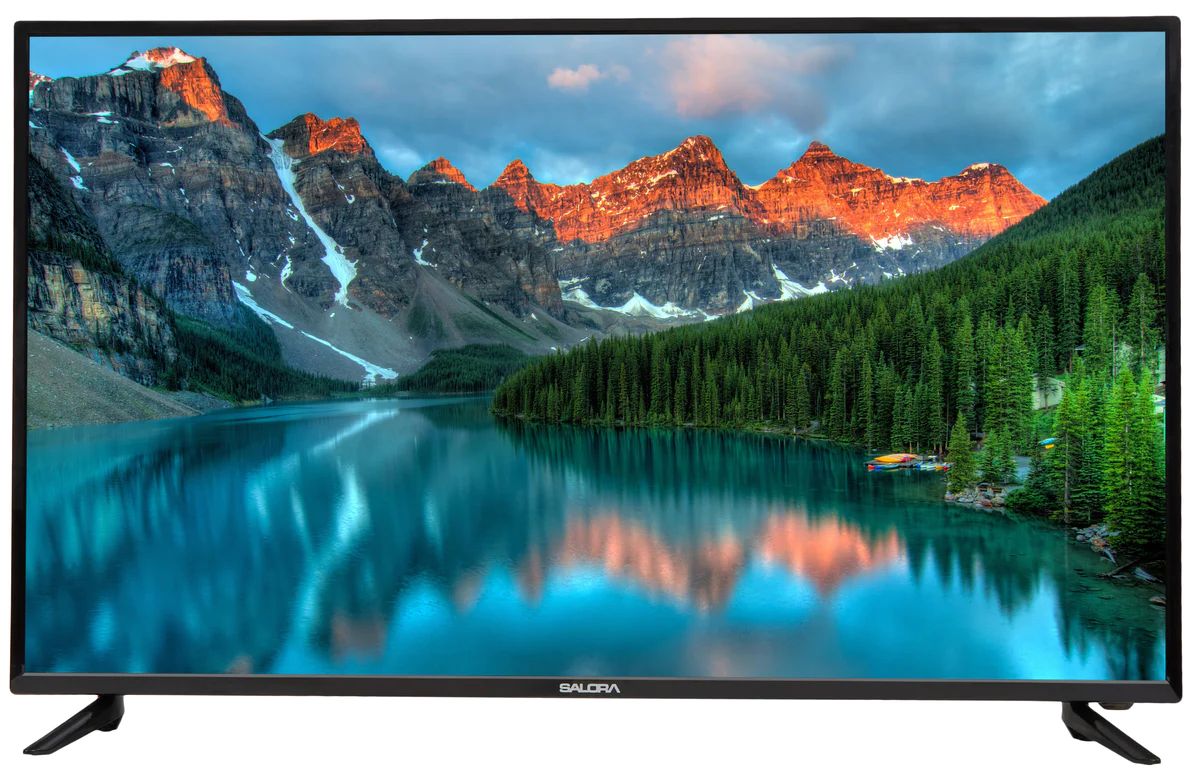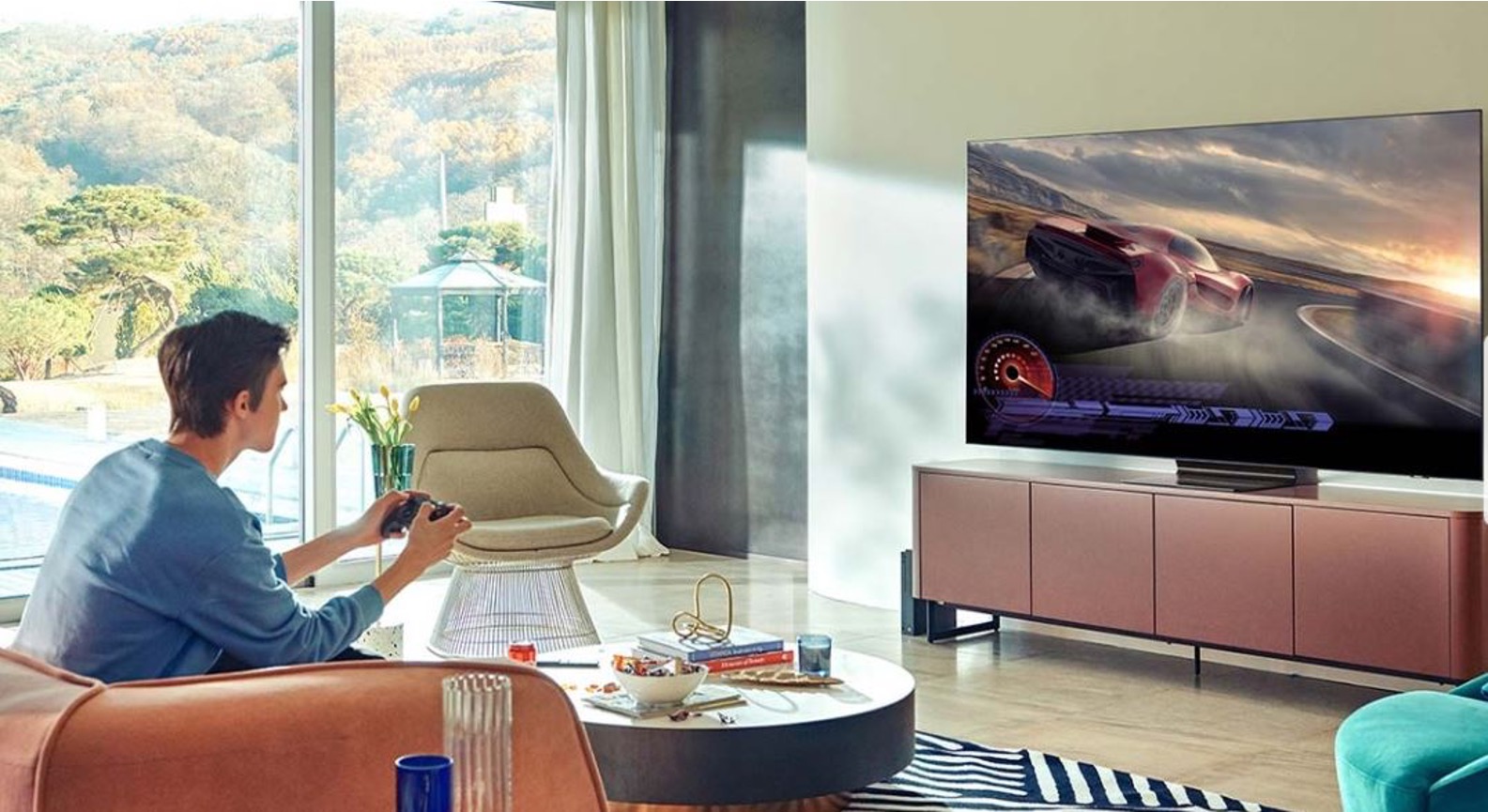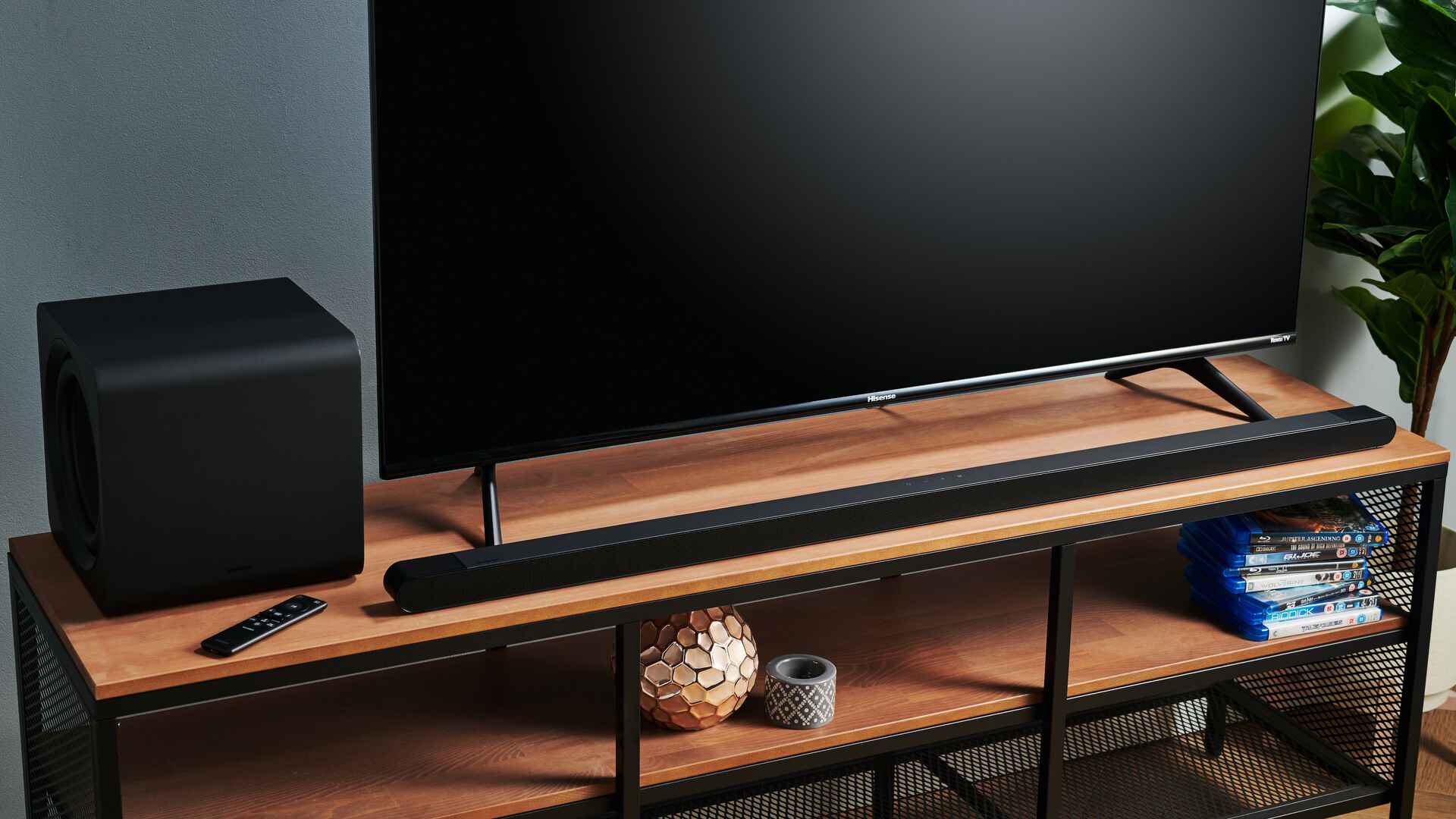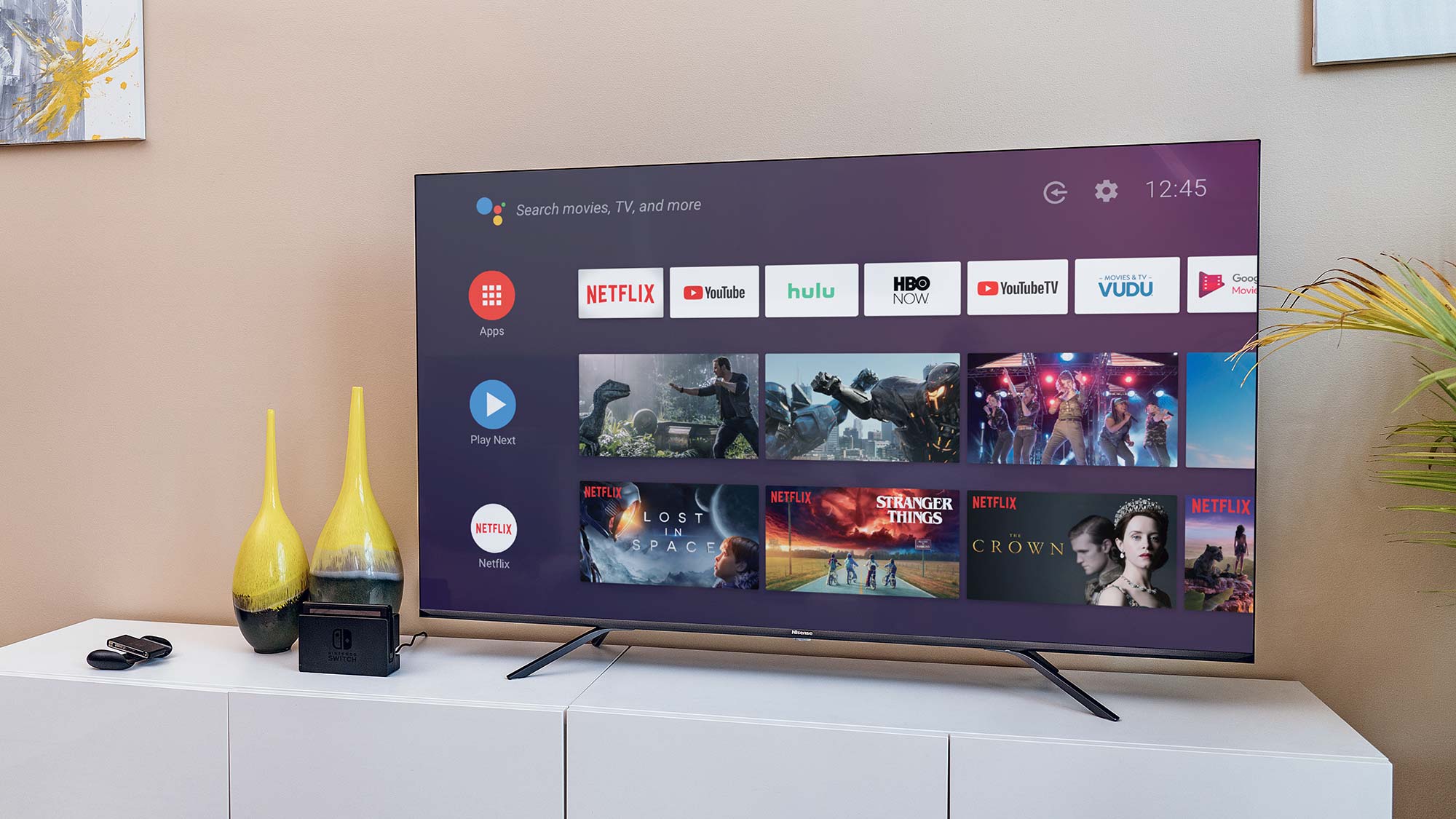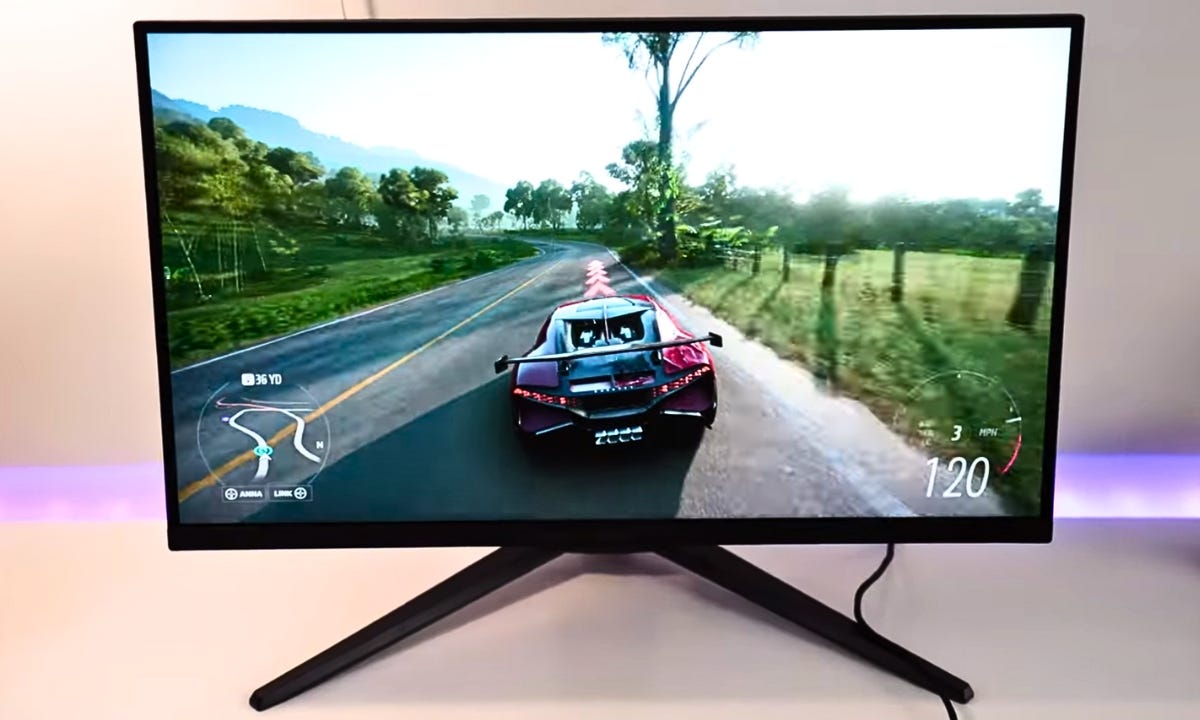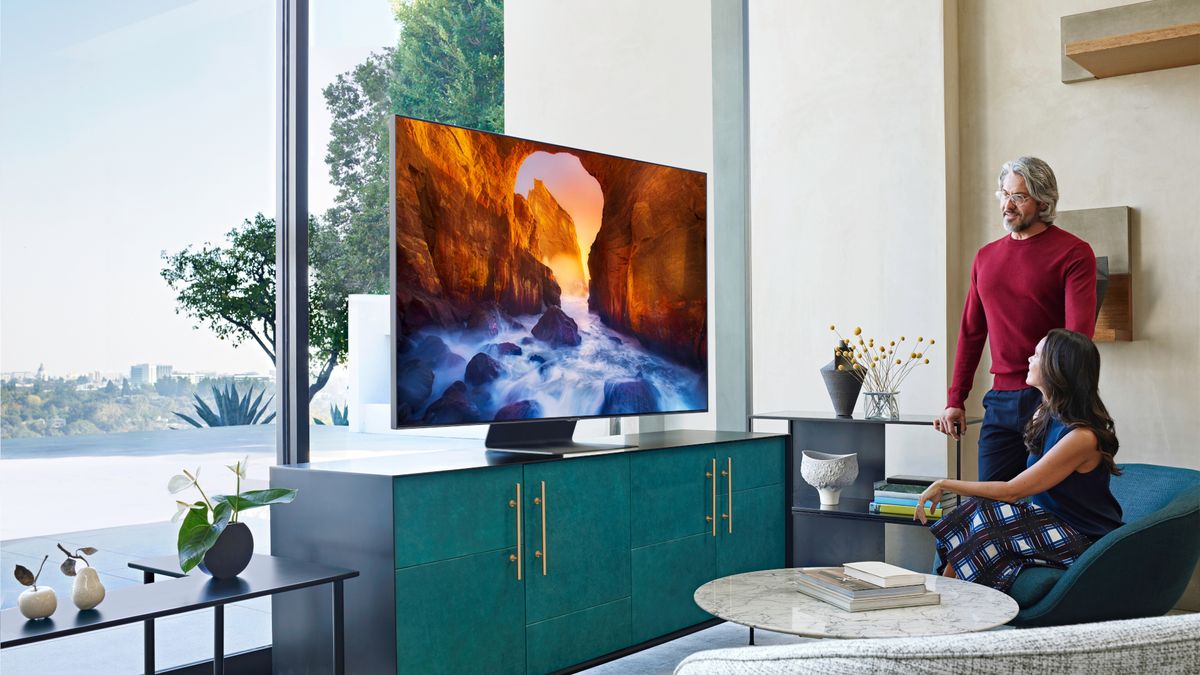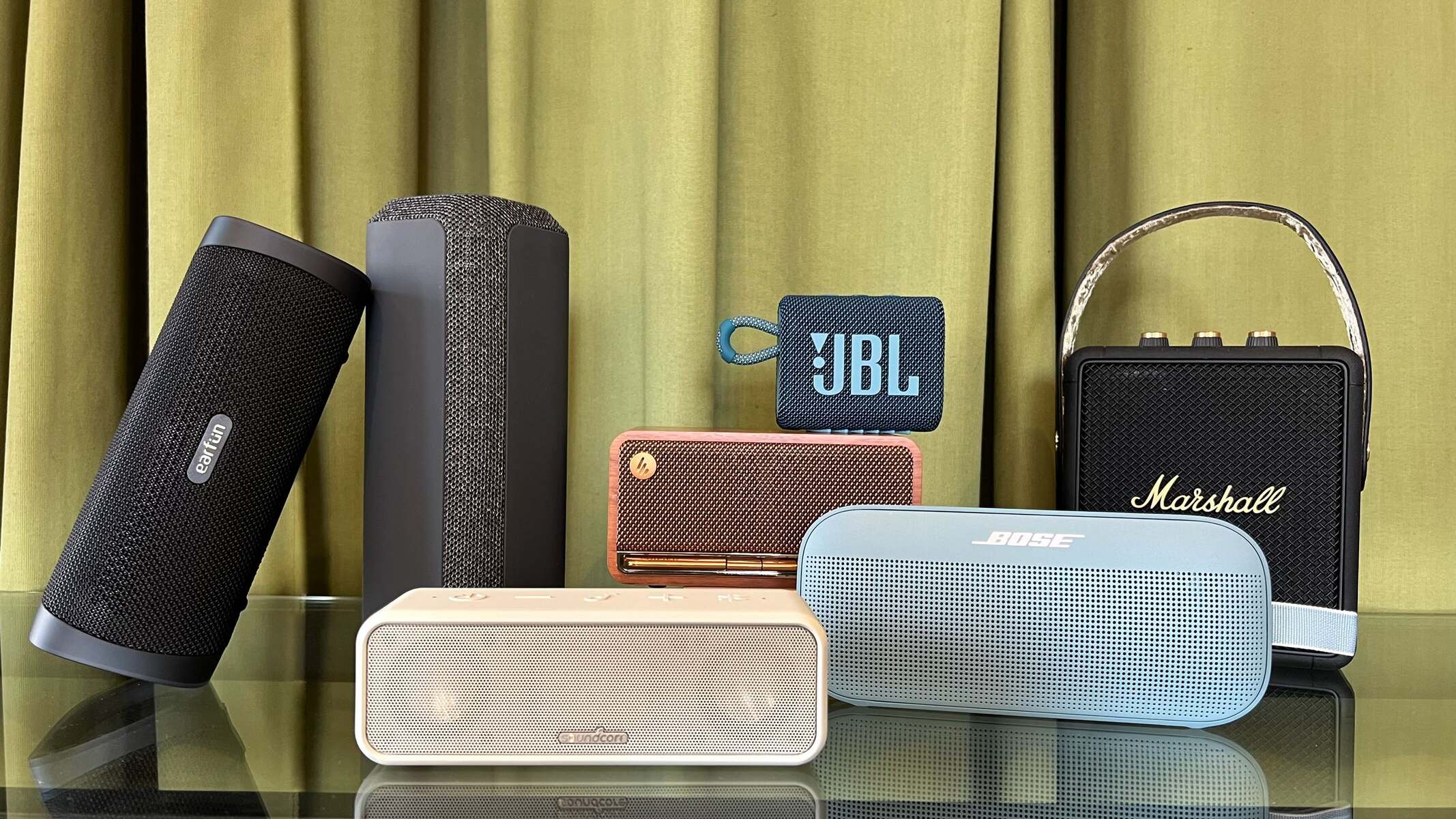Introduction
Wireless speakers have become increasingly popular in recent years, offering a convenient and hassle-free way to enjoy high-quality audio without the constraints of cables. If you own an LED TV and want to enhance your viewing experience with immersive sound, connecting wireless speakers is a fantastic option. By eliminating the need for wired connections, you can enjoy a clutter-free entertainment setup.
In this article, we will guide you through the process of connecting wireless speakers to your LED TV. Whether you’re a tech-savvy individual or just starting out, this step-by-step guide will help you navigate the process effortlessly.
Before we dive into the steps, it’s important to note that not all LED TVs are compatible with wireless speakers. Make sure to check the specifications of your TV and ensure it has the necessary connectivity options to support wireless audio transmission. Most modern LED TVs come with Bluetooth or Wi-Fi capabilities, which can be used to connect wireless speakers. It’s also worth mentioning that the quality and range of wireless audio can vary depending on the model and brand of the TV.
If your LED TV meets the compatibility requirements, let’s move on to discussing the different types of wireless speakers available in the market. This will help you choose the best option that suits your needs and preferences.
Step 1: Check for Compatibility
Before diving into the process of connecting wireless speakers to your LED TV, it is essential to ensure that your TV is compatible with wireless audio transmission. This step will help you avoid any potential compatibility issues or frustrations later on.
First, check the specifications of your LED TV and look for Bluetooth or Wi-Fi connectivity options. Most modern LED TVs are equipped with one or both of these features, which are essential for connecting wireless speakers. If your TV does not have built-in Bluetooth or Wi-Fi capabilities, you may need to consider alternative methods, such as using a separate Bluetooth audio adapter or a wireless transmitter.
If your TV has Bluetooth capabilities, you can easily connect Bluetooth-enabled speakers without the need for any additional devices. On the other hand, if your TV only supports Wi-Fi, you will need to look for speakers that are compatible with Wi-Fi connectivity.
It is worth noting that some LED TVs may have additional options for connecting external audio devices, such as HDMI ARC (Audio Return Channel) or optical audio output. These connections can provide enhanced audio quality and are worth considering if available on your TV.
Lastly, ensure that both your LED TV and wireless speakers are from the same manufacturer or have compatible standards. This will help guarantee seamless connectivity without any compatibility issues. If you are unsure about the compatibility, refer to the user manuals or contact the manufacturer’s support team for further assistance.
By thoroughly checking the compatibility of your LED TV and wireless speakers, you can ensure a smooth and hassle-free setup process. Once you have verified the compatibility, you can proceed to the next steps to connect your wireless speakers to your LED TV.
Step 2: Choose the Type of Wireless Speakers
Now that you have confirmed the compatibility of your LED TV, it’s time to choose the type of wireless speakers that will best suit your audio needs and preferences. There are a few different options available, each with its own advantages and considerations.
1. Bluetooth Speakers: Bluetooth speakers are a popular option for wireless audio connectivity. They are versatile, portable, and can be easily paired with your LED TV. Most modern LED TVs have built-in Bluetooth capabilities, allowing you to connect Bluetooth speakers directly without the need for additional transmitters or adapters. Bluetooth speakers are ideal for smaller spaces or if you plan to use them in different locations.
2. Wi-Fi Speakers: Wi-Fi speakers offer a wider range and more stable wireless connectivity compared to Bluetooth speakers. They often come with advanced features such as multi-room audio playback and compatibility with voice assistants like Amazon Alexa or Google Assistant. However, it’s important to note that your LED TV must have Wi-Fi capabilities for these speakers to work. If your TV supports Wi-Fi but not the specific brand of Wi-Fi speakers you choose, you may need to use a separate Wi-Fi adapter.
3. Soundbar: Soundbars are a popular choice for enhancing the audio experience of your LED TV. They are compact and can easily be mounted beneath or on top of your TV. Many soundbars come with built-in Bluetooth or Wi-Fi connectivity, making them ideal for wireless audio transmission. Additionally, soundbars often offer a more immersive sound experience compared to standalone speakers, as they come with multiple speakers and sometimes even a subwoofer.
Consider your audio preferences, budget, and the space in which you plan to use the wireless speakers when choosing the type that is right for you. Take the time to read reviews and compare specifications to ensure you select a high-quality speaker that will meet your expectations.
With your type of wireless speakers in mind, you can now move on to the next step, which involves connecting the wireless transmitter to your LED TV.
Step 3: Connect the Transmitter to the TV
Once you have chosen the type of wireless speakers that best suit your needs, it’s time to connect the transmitter to your LED TV. The transmitter acts as a bridge between your TV and the wireless speakers, transmitting the audio signal wirelessly.
Here are the general steps to connect the transmitter:
- Power off your LED TV and the wireless speakers.
- Locate the audio output ports on your TV. These ports may vary depending on the model and brand of your TV. Common audio output options include HDMI ARC (Audio Return Channel), optical audio output, or a 3.5mm headphone jack.
- Identify the corresponding input options on the transmitter. Most transmitters come with multiple input options to accommodate various TV models.
- Choose the appropriate cable for your connection. For example, if your TV has an HDMI ARC port, you will need an HDMI cable. If you have an optical audio output, you will require an optical cable.
- Connect one end of the cable to the audio output port on your TV and the other end to the corresponding input port on the transmitter.
- Ensure that the connections are secure and tight to avoid any audio interruptions.
- Power on your LED TV and the wireless speakers.
- Follow the specific instructions provided with your wireless speakers and transmitter to pair them together. This process may involve pressing specific buttons or navigating through the TV settings to establish a connection.
- Once the pairing is successful, you should hear audio coming from your wireless speakers. If the audio is not properly synced or if you experience any issues, refer to the user manual or contact customer support for troubleshooting assistance.
By following these steps, you can seamlessly connect the transmitter to your LED TV and establish a wireless audio connection with your speakers. The next step involves adjusting the speaker settings on your TV to optimize the audio experience.
Step 4: Sync the Wireless Speakers with the Transmitter
After successfully connecting the transmitter to your LED TV, the next step is to sync the wireless speakers with the transmitter to ensure a seamless and synchronized audio experience.
Here is a general guide to help you sync the wireless speakers with the transmitter:
- Refer to the user manual of your wireless speakers to familiarize yourself with the specific syncing process. Different brands and models may have slightly different procedures.
- Make sure the wireless speakers are turned on and within the range of the transmitter. The range can vary depending on the model, so it’s best to stay within a reasonable distance.
- Access the settings menu on your LED TV and navigate to the audio settings. Look for an option related to wireless audio or speaker setup.
- Follow the on-screen instructions or prompts to initiate the pairing process. This may involve pressing specific buttons on the wireless speakers or entering a pairing code.
- Wait for the LED indicator or audio confirmation that the syncing process is successful.
- Once synced, test the audio by playing a video or music on your LED TV. Adjust the volume and make sure that the audio is coming from the wireless speakers.
- If the audio is not properly synced or if there are any issues, try restarting the wireless speakers and the transmitter. Additionally, make sure that the wireless speakers are charged or have fresh batteries, if applicable.
Remember to consult the user manual of your specific wireless speakers and follow any additional instructions provided. Every brand and model may have unique steps or requirements to sync the wireless speakers successfully.
With the wireless speakers synced and audio playing wirelessly from your LED TV, you are one step closer to enjoying an immersive audio experience. However, before you start enjoying your favorite movies or shows, there are a few speaker settings on your TV that you should adjust to optimize the audio quality.
Step 5: Adjust the Speaker Settings on Your TV
Once you have successfully synced the wireless speakers with the transmitter and the audio is playing wirelessly from your LED TV, it’s essential to fine-tune the speaker settings on your TV to optimize the audio quality.
Here are some recommended speaker settings adjustments:
- Audio Output: Access the audio settings on your TV and select the appropriate output option for your wireless speakers. This may be labeled as “External Speakers,” “Audio Output,” or something similar. Choose the wireless speakers as the primary audio output to ensure that the sound is coming from the speakers and not the TV’s built-in speakers.
- Sound Mode: Depending on your TV model, there may be various sound modes available, such as Standard, Movie, Music, or Sports. Experiment with different sound modes to find the one that best suits your audio preferences. You can also adjust individual sound settings like bass, treble, balance, and surround sound to further optimize the audio output.
- Lip Sync (Audio Delay): In some cases, there might be a slight delay between the video and audio output when using wireless speakers. This can lead to lip-sync issues, where the audio doesn’t match the characters’ mouth movements. Check your TV settings for an option called “Lip Sync,” “Audio Delay,” or similar. Adjust the audio delay until the audio and video are in perfect sync.
- Volume Leveling: TV shows and movies often have variations in sound levels, resulting in sudden volume changes. Some TVs have a volume leveling feature that helps maintain a consistent volume level. Enable this feature to ensure a more balanced and comfortable audio experience.
- Surround Sound: If you have a soundbar or wireless speakers that support surround sound, ensure that your TV’s audio settings are configured to output audio in surround sound format. This will enhance the immersion and create a more immersive audio experience.
Remember that the specific settings and options can vary depending on your TV model and brand. Refer to your TV’s user manual or on-screen menu for detailed instructions on accessing and adjusting the speaker settings.
By taking the time to adjust the speaker settings on your TV, you can fine-tune the audio output to your liking and achieve the best possible sound quality with your wireless speakers.
Conclusion
Connecting wireless speakers to your LED TV can greatly enhance your entertainment experience by providing immersive and high-quality audio. By following the steps outlined in this guide, you can easily set up and enjoy wireless audio transmission.
First, ensure that your LED TV is compatible with wireless speakers by checking for Bluetooth or Wi-Fi capabilities. Then, choose the type of wireless speakers that best suit your needs and preferences, whether it’s Bluetooth speakers, Wi-Fi speakers, or a soundbar.
Next, connect the transmitter to your LED TV by identifying the audio output ports and connecting the appropriate cables. Once connected, follow the specific instructions provided with your wireless speakers to sync them with the transmitter.
After successfully syncing the wireless speakers, adjust the speaker settings on your TV to optimize the audio experience. This includes selecting the correct audio output, adjusting sound modes, setting the audio delay, enabling volume leveling, and configuring surround sound options if available.
Remember, the steps may vary slightly depending on your specific LED TV and wireless speaker models, so always refer to the user manuals or contact customer support for further assistance if needed.
With your wireless speakers connected and settings adjusted, you can now immerse yourself in a captivating audio experience while watching your favorite movies, shows, or listening to music. Say goodbye to tangled cables and enjoy the freedom of wireless audio with your LED TV and wireless speakers.







